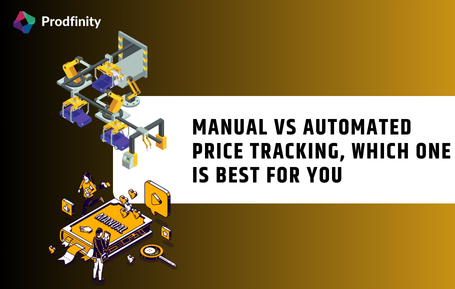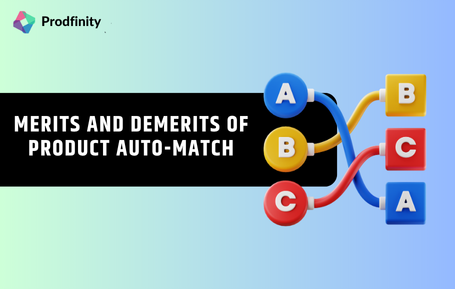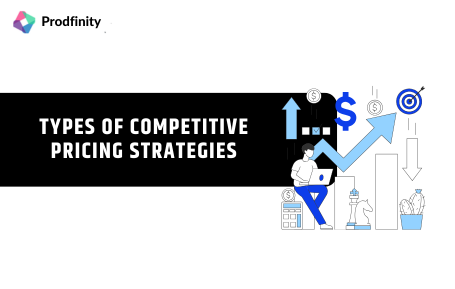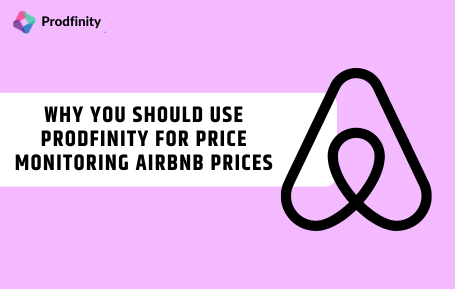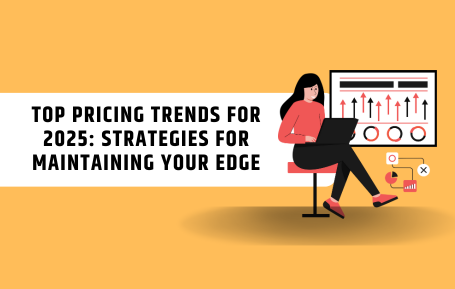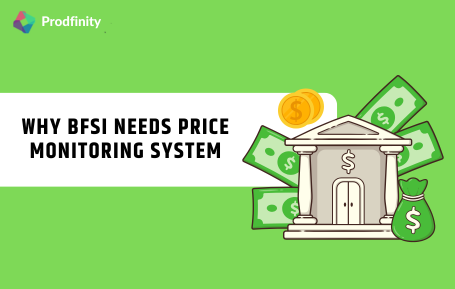In this fast-growing market, everything changes in a snap; your product must be a bestseller a few days ago, and now there are no orders, your website is ranking, but now it disappears suddenly or you are doing good on the e-commerce platform, and now suddenly things slow down.
These inconsistencies are normal in business, but knowing what causes these inconsistencies can help you to understand a lot about how the market works, your customers’ behaviour. etc.
But now you must be wondering how to track this information, so the answer is Competitive Price Tracking, a technique which has helped numerous businesses till date.
And today in this article, we will discuss which type of Price Tracking will work best for you, whether you are selling on your own D2C store or dealing with Amazon, or using multiple platforms to sell your product, we kept you in mind while doing the analysis.
Before heading to the article, let’s see what we are covering.
What is Price Tracking ?
Competitive price tracking is a technique where the prices of competitors are monitored and analysed for the products that are the same or similar to yours to make pricing decisions practical. This makes sure that you are selling your product at the right price, neither they are overpriced nor underpriced.
If said simply, competitive price tracking is a process in which you keep an eye on your competitors’ prices to make sure your prices are correct and according to what your customers are willing to pay. This provides you a competitive edge in the market as you know what you are doing will get the result, as it is getting results for your competitors too.
Visit the article Competitive Price Tracking for more detailed information.
What is Manual Price Tracking ?
As the name suggests, Manual Price Tracking is a way in which price tracking is done manually. It can be a team, your employee or you who is visiting your competitors’ websites to record their prices on an Excel or Google spreadsheet.
Manual price tracking is a traditional way of price tracking that has been used for countless years, and few businesses track the price manually only.
Pros and Cons of Manual Price Tracking
After understanding what is manual price tracking, let’s discuss its pros and cons so you can understand it better.
Pros of Manual Price Tracking
As manual price tracking has been used for countless years, so there must be some interest it serves the business because of which it is still used by so many companies and in almost all sectors. So let’s understand the advantages of using manual price tracking.
No upfront cost
Unlike other tools people are using, implementing manual price tracking in your business doesn’t require any set-up cost or expertise in any field to work with it. Manual price tracking can be done by a single person who can give their time to tracking the competitors’ prices and maintaining a sheet for further analysis.
Full control over what you track
Let’s suppose you didn’t plan to give much of your attention to one of your products which didn’t do too good, so while tracking the information of your competitors, you can skip tracking the product same or similar to yours, which you abandoned.
This is one of the examples that can explain the manual price tracking gives you full control over what you want to track and from where. Don’t want to track information from the D2C store, you can always visit e-commerce websites for data.
Simple to understand
When you track and update data, it is more likely that you won’t have to spend more time understanding your data. This can ease your analysis as well as decision-making process. Even if you are not the one who collected the data, it will still be easy to understand and analyse.
Cons of Manual Price Tracking
While manual price tracking is been used for so many decades, it started fading in this new era. There must be some drawbacks because of which it is finding it difficult to survive now.
Time-consuming
Time is considered one of the most important resources these days, whether professionally or personally, everyone has started prioritising their time and where they are spending it and wasting countless hours in a process that a machine can do in a few minutes is not something very efficient.
Tedious and error-prone
As humans, we make mistakes, some intentionally, some due to rush or ignorance and some because of exhaustion, but our every work is prone to silly mistakes and makes errors, especially when the work is something related to numbers. Error-filled data could lead to wrong analysis and eventually wrong decisions.
Not scalable for large catalogues
Lets suppose you have 50 products in your catalog and you consider 5 business your major competitors, then you have to monitor 250 products daily and if in your industry can change prices during times of day, then you need to monitor these products multiple times a day, which won’t work effectively in long run.
Hard to react quickly to price changes
While price shifts can happen anytime, if you are using manual price tracking, then there are chances that you will find out about price changes during official hours only, which not only prepares you for the unexpected events but also prevents you from taking advantage of the price shift.
What is Automated Price Tracking?
Automated price tracking is a technique by which the price tracking process is automated, and there is no need for human intervention. For example, if we set a car from manual to automatic mode, in the backend the gear will change when required, but you don’t have to do it manually, so you can focus on traffic and more important stuff.
Automated price tracking gives you the liberty of automating the price tracking services, so you can spend more time on making pricing strategies or expanding your business than checking your competitor’s price alterations and comparing them with other competitors. There are numerous platforms these days that provide automated price tracking services.
Wanted to try automated price tracking? Check out Competitive Pricing
Pros and Cons of Automated Price Tracking
Like everything else, if automated price tracking has some advantages due to which so many businesses are adopting it, there are some disadvantages too, because of which many businesses are hesitant to try it. So let’s discuss them both.
Pros of Automated Price Tracking
Let’s explore the good side of automated price tracking first, so that you know what the perks are that you can get if you avail such services.
Saves time and labor
Automated price tracking saves time and resources for your business so you can use them more effectively. As the whole tracking process will be automated so there won’t be any need for human efforts or intervention in it.
Real-time competitive insights
You must have heard that Amazon updates its data in every 10 seconds, so tracking your competitors activity is not really possible if you are not using automated price tracking, as it provide you real-time data, which means, if you are tracking your competitors prices from Amazon, so when there will data updation, automated price tracking will also update your data accordingly.
Scales your business
It doesn’t matter if your catalogue has 100 products or 1000 products, you can always track your competitors with just a few taps, so in a way, automated price tracking gives you the freedom of expanding your business without having stress of data extraction and its cleaning.
Allows dynamic pricing and alerts
Dynamic pricing, the soul of pricing strategy, is very hard to implement if you are doing everything manually, because setting the right price at the right time is the main principle of dynamic pricing. Automated price tracking helps you to implement dynamic pricing in your pricing strategy as it provides fast and real-time data by which you can analyse your market and decide fast.
Wanted to know more about dynamic repricing, check out our article [[Increase your Dynamic of Growth with Dynamic Repricing]]
Minimizes human errors
We humans are prone to errors but machines don’t. Automated price tracking makes sure the data provided to you is error free and accurate so you can relay on the data and make decision based on the data only.
Cons of Automated Price Tracking
As we all know, everything have good as well as bad side, so lets discuss some of the most common drawbacks of automated price tracking.
Subscription and setup cost
While the platforms which are ready to serve you with their accurate and real-time data, they don’t do it for free. There are subscription cost on which can be based on weekly, monthly and yearly basis, so the customers can choose the plan avail their services.
In addition to that, unlike manual price tracking, business have to set up the software and integrate it to their company software for better result which also takes cost some money. While the charges aren’t as high to make a hole on a businessman pocket, but still it is not cost-free like manual price tracking.
Requires initial technical onboarding
While automated price tracking can be used as regular price tracking but there are still some of the technical skills required from the side of business to set it up and ensures its proper working from time to time.
While manual price tracking can be done by layman too, automated price tracking requires certain amount of skill of make it work through, even when it is an easy going tool.
May require integration with internal systems
These days every business have their own working management software, either they are for inventory management or just employee management, nothing is done manually these days, so if you want your automated price tracking should work effectively then you need to integrate it with your internal software, which is not only hard to integrate but also haves a risk of leaking your confidential information.
Difference Between Manual and Automated Price Tracking
After understand both types of price tracking, let understand the key differences between them so you can understand both types more clearly.
Time Investment
Manual Price Tracking:- It requires lot of time investment when ever you need to track the prices or update the data, it can’t be run in bthe ackground as there is always need of a person for tracking of prices.
Automated Price Tracking:- It requires very low time investment, which is require normally during initial stages like at the time of setup and integration and it run all the time in the background.
Accuracy
Manual Price Tracking :- It is prone to human errors, sometimes small as well as sometimes big which can lead to wrong analysis and decisions.
Automated Price Tracking :- There is very less chances of errors in automated price tracking because of which it provide more accurate data as well as guidance.
Scalability
Manual Price Tracking :- It won’t be possible to scale with manual price tracking beyond few products as the data would take lot of time to collect and it will be inefficient.
Automated Price Tracking :- There is not many modifications or struggles if you are scaling your business while you are already using automated price tracking tool or services.
Data Insights
Manual Price Tracking :- Most commonly the data insights are in basic form like tables or list and require human analysis for decision making.
Automated Price Tracking :– It provides advance data insight with visual presentation of data through charts and dashboards and can analyze trends change.
Update Frequency
Manual Price Tracking :- It can be updated daily or weekly depends on number of SKUs and competitors.
Automated Price Tracking :- Data can be updated on hourly basis or real time without any dependency on the number of products or competitors.
Cost
Manual Price Tracking :- It is free of cost, until you don’t hire someone for tracking the prices and collecting data for yourself but it cost lot of time.
Automated Price Tracking :- It is mainly provided in subscription plans on weekly, monthly or yearly basis.
For further understanding, below is the table containing all the difference between manual and automatic price tracking in a summarized way.
| Feature | Automated Price Tracking | Manual Price Tracking |
|---|---|---|
| Time Investment | High – requires daily/weekly updates | Identifies duplicate listings |
| Accuracy | Prone to human error | High – real-time and error-free |
| Scalability | Not scalable beyond a few products | Easily tracks thousands of products |
| Data Insights | Basic insights, requires manual analysis | Advanced analytics, dashboards, trends |
| Update Frequency | Weekly or monthly | Hourly or real-time |
| Cost | Free (except labor hours) | Subscription-based pricing |
Which One Should You Choose
After looking for the key difference between manual price tracking and automated price tracking if you are still not really sure which one you should implement in your business, then no worries we are discussing some of common factors of business and which type of price tracking is suitable for each factor.
Business Size and Number of SKUs
Manual price tracking can help you nicely if you have initially started your business or number of product you are dealing with is less than 10, you can track you competitors pricing activity easily, even when you won’t be able to have real-time data but still manual price tracking will be helpful for you.
But if your business size is large and you are dealing in hundreds or thousands of SKUs then it will be impossible for you to track your competitors manually and you should use automated price tracking for using your time, efforts and resources effectively.
Price Fluctuation Rate
If you are working in a certain industry where price fluctuations aren’t frequent or your competitors don’t change prices regularly then there is no need for real-time data for you and you can manually track your competitors once in a week or two weeks.
But if your competitors changes prices daily or multiple times a day, then it is suggested to use automated price tracking because of its real-time data updation feature and covering large amount of competitors, so you can know about every activity of your competitor.
You are a Startup or Well Established Company
If you are in the initial stage of your business and exploring the market and techniques to see which one will work for you or not, then you can try manual price tracking to see if it will work for you or not, and how effectively you require it.
On the other hand, if you are an well established company and knows exactly what you wanted from the market and your customers then it is recommended for you to opt automated price tracking, as it will also help you to imply dynamic repricing, price intelligence, competitive prices in your business.
Conclusion
In this competitive era where prices is normally the deciding factors for the sales and purchasing decision, tracking your competitor prices is must to do activity to have some competitive edge in the market and be prepared for your competitors next move.
Manual price tracking can work but it is not the ideal way to track prices of this vast market which has no boundaries. To make sure you are competitive, agile and profitable you should automate your price tracking methods and grow business effortlessly.
Looking for an effective price tracking tool? Try Price Tracking Tool.


